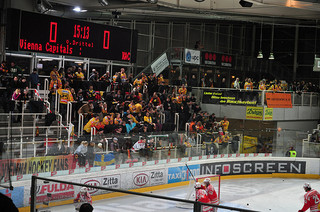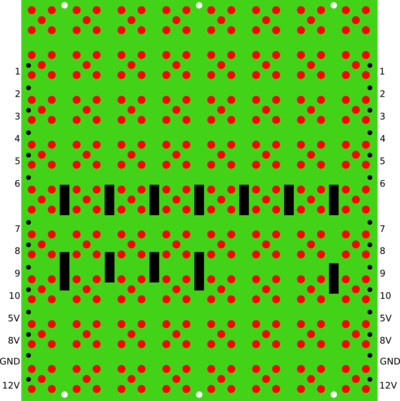Blinkofant: Unterschied zwischen den Versionen
aus Metalab Wiki, dem offenen Zentrum für meta-disziplinäre Magier und technisch-kreative Enthusiasten.
Zur Navigation springenZur Suche springen| Zeile 8: | Zeile 8: | ||
Each of the 8*9 pixels consists of 5 LEDs = 360 red LEDs per panel<br /> | Each of the 8*9 pixels consists of 5 LEDs = 360 red LEDs per panel<br /> | ||
| − | 300 panels equals | + | 300 panels equals 100.000++ LEDs :) |
| + | |||
| + | <strike>we don't know how to power them yet :)</strike> we are probably going to use the trafo we got out of the old displays.<br/> | ||
| + | needs 3x380V outputs 140 AMP 12V weights 40kg+ | ||
| + | |||
| + | There is a mailinglist for the blinkofant project see: blinkofant@lists.metalab.at | ||
| − | |||
| Zeile 101: | Zeile 105: | ||
wenn man das blinkybit gesetzt hat kann man auf pin6 eine clock anlegen die die blinkenrate vorgibt | wenn man das blinkybit gesetzt hat kann man auf pin6 eine clock anlegen die die blinkenrate vorgibt | ||
</pre> | </pre> | ||
| + | |||
| + | |||
Version vom 27. März 2012, 20:14 Uhr
WTF?Recently we got these *huge* LED walls. We disassmbled the monster and now we got ~300 LED panels Each of the 8*9 pixels consists of 5 LEDs = 360 red LEDs per panel
There is a mailinglist for the blinkofant project see: blinkofant@lists.metalab.at
Pinout
pin 1 -> pin 8
SoftwareAktuelle Testfirmware für den Arduino liegt im GIT von 5uper.net ( git clone git@5uper.net:ledmatrix.git )
SPI.begin(); SPI.setBitOrder(LSBFIRST); SPI.setDataMode(SPI_MODE0); SPI.setClockDivider(SPI_CLOCK_DIV128); // biggest divider there is. ... SPDR = panelData[i]; while(!(SPSR & (1<<SPIF))); ein panel besteht aus 8*9 pixel 8 spalten mal 9 pixel man schiebt 10 bits an daten rein für jede der 8 spalten 9 bits an/aus pro pixel + 1 bit ob diese spalte blinkt wenn man das blinkybit gesetzt hat kann man auf pin6 eine clock anlegen die die blinkenrate vorgibt
|
|


